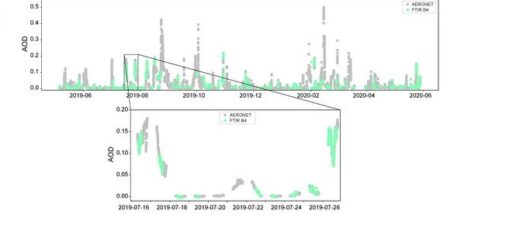NEW STUDY: EXPOSURE TO URBAN ULTRAFINE PARTICLES INCREASE THE RISK TO SUFFER A HEARTH FAILURE
The Revista Española de Cardiología publishes, issue 4(8), a study performed by the Hospital University of the Canaries and the Izaña Atmospheric Research Centre, that concludes that exposure to ultrafine particles is a risk factor to suffer a hearth failure.
The World Health Organization ranks air pollution as the 13th leading cause of worldwide mortality, being cardiovascular diseases the most frequent cause of death linked to air pollutants. It is currently considered that cardiovascular diseases are more linked to exposure to particulate than to gaseous pollutants. For this reason, limit values for PM10 and PM2.5 particles (diameter smaller than 10 and 2.5 microns) are set within the EU territory. The mechanisms by with particulate pollutants results in health effects are still unknown. Key questions are: Which pathways follows inhaled particles to result in hearth effects?. Are more dangerous the smallest particles?. Plays a role the chemical composition?.
The new study of the Hospital University of the Canaries and the Izaña Atmospheric Research Centre was performed in Santa Cruz de Tenerife with data collected during 2008 and 2009. Concentrations of PM10 (diameter < 10 microns), PM2.5 (diameter < 2.5 microns), black carbon (diameter < 10 microns) and ultrafine (diameter < 0.1 microns) particles were compared with the hospital admissions of 3950 patients affected by heart failure and acute coronary syndrome. After the removing the influence of known risk factors (smoke tobacco, diabetes, hypertension, among other) it was obtained that patients affected by heart failure were exposure to higher concentrations of ultrafine particles that patients affected by acute coronary syndrome. The study concludes that the exposure to ultrafine particles is risk factor that precipitates admission by heart failure. Ultrafine particles are emitted by vehicle exhaust and formed in the air due to emissions of sulphur dioxide (SO2) in industrial activities (power plants, oil refinery, among other) and ships.
The editorial of the Revista Española de Cardiología, issue 64(8), is dedicated to this study. There, Dr. J.A. Aruajo (University of California) discusses on the results of this study within a global context, comparing to other studies. The mechanisms by which the different types of particles (PM10, PM2.5 and ultrafine) may cause different affects are discussed.
|
Financial support: Part of this study was funded by projects GRACCIE (CSD2007-00067; Ministry of Science and Innovation of Spain) and EPAU (B026/2007/3-10.1; Ministry of Environment). |
|
Study: Title: Comparative Study of Ambient Air Particles in Patients Hospitalized for Heart Failure and Acute Coronary Syndrome Authors: Alberto Domínguez-Rodríguez, Javier Abreu-Afonso, Sergio Rodríguez, Rubén A. Juarez-Prera, Eduardo Arroyo-Ucar, Alejandro Jiménez-Sosa, Yenny González, Pedro Abreu-González. LINK TO ARTICLE |
|
Editorial: Title: Are Ultrafine Particles a Risk Factor for Cardiovascular Diseases? |
|
Press: |







